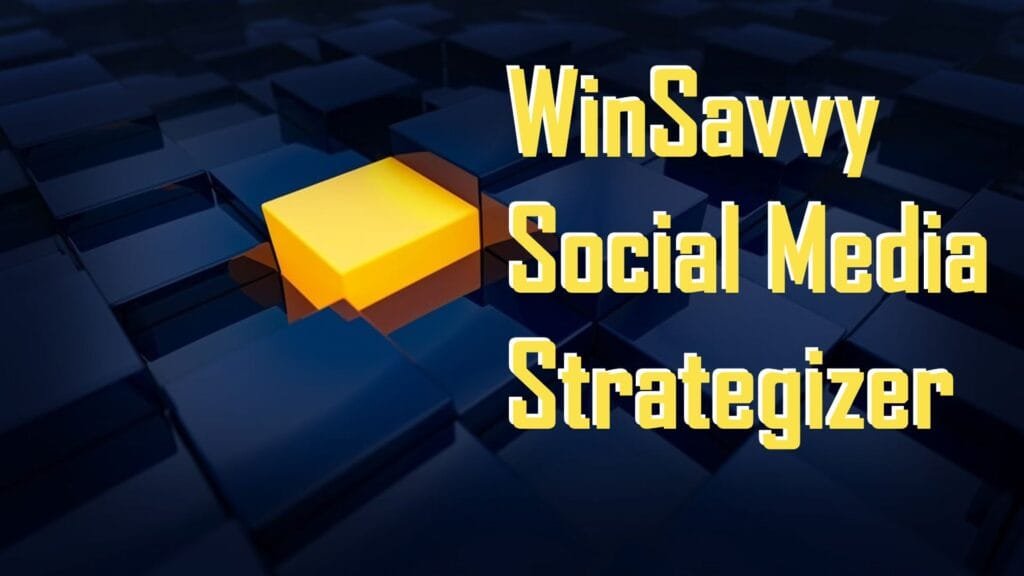In the bustling digital marketplace, your landing page is your storefront, your handshake, and your first impression all rolled into one. It’s got to be good. Really good. That’s where landing page builders like Unbounce and Leadpages come into play, offering the tools and templates to create pages that not just look fantastic but convert like crazy too. But which one is the right pick for you? Whether you’re launching your first campaign or looking to streamline an existing one, this guide is here to walk you through the nitty-gritty of Unbounce and Leadpages, helping you make that all-important decision.
| Unbounce | Leadpages |
|---|---|
 |  |
| G2 Score – 4.4 out of 5 stars | G2 Score – 4.3 out of 5 stars |
| TrustRadius Score – 7.1/10 | TrustRadius Score – 7.9/10 |
Usability and Design Capabilities: Where Creativity Meets Conversion
Crafting Your Online Presence
The heart of a successful landing page lies in its ability to marry stunning design with user-friendly functionality. After all, what good is a beautiful page if it doesn’t convert? Or a highly optimized one that doesn’t draw the visitor in? Let’s dive into how Unbounce and Leadpages stack up in helping you strike that perfect balance.
Unbounce: A Canvas for Your Creativity
Unbounce is like a Swiss Army knife for marketers who crave design flexibility without needing a degree in graphic design. The platform’s drag-and-drop builder is intuitive, offering freedom to customize every element of your landing page without touching a line of code. Unbounce doesn’t just stop at offering design flexibility; it ensures that the creative process is backed by solid conversion optimization tools. Features like dynamic text replacement and A/B testing empower you to create landing pages that are not only visually appealing but are fine-tuned to your audience’s preferences and behaviors.
But where Unbounce really shines is in its ability to offer advanced users and marketers the tools to go beyond the basics. With its custom scripts and targeted popups and sticky bars, Unbounce allows for a level of customization and targeting that can significantly boost your conversion rates.
Leadpages: Simplifying Success
Leadpages takes a slightly different approach, emphasizing simplicity and speed in the landing page creation process. It offers a wealth of templates that are not just beautiful but are categorized and optimized for various industries and conversion goals. This means you can quickly select a template, make a few tweaks, and go live in minutes, confident that your page is built on proven conversion principles.
Leadpages also excels in providing a seamless integration with a range of marketing tools and platforms, from email marketing services to webinar platforms, making it a breeze to connect your landing pages with your broader marketing ecosystem. Its built-in conversion tools, such as alert bars and opt-in texts, ensure that you have everything you need to start converting visitors right out of the box.
Conversion Optimization Features: Maximizing Your Marketing Impact
The Crucial Role of Conversion Tools
In the digital marketing arena, the efficiency of your landing pages in converting visitors directly influences the success of your campaigns. It’s not just about driving traffic to your site; it’s about making sure that traffic takes the action you want when they get there. Here’s how Unbounce and Leadpages stack up in providing the features you need to optimize for conversions.
Unbounce: Tailored Experiences for Targeted Conversions
Unbounce emphasizes providing marketers with a robust toolkit for creating highly optimized, conversion-focused landing pages. One of the platform’s standout features is its Dynamic Text Replacement (DTR), which tailors the landing page content to match the search terms used by visitors, offering a more personalized experience that can significantly increase conversion rates.
Additionally, Unbounce’s A/B testing capabilities allow you to experiment with different elements of your landing pages, from headlines to images, ensuring that you can continually refine your pages based on real user data. This feature is complemented by detailed analytics that offer insights into how each variant performs, enabling data-driven decisions to enhance your conversion rates further.
Moreover, Unbounce’s popups and sticky bars are designed to capture attention at critical moments, providing additional opportunities to convert visitors without disrupting their browsing experience. These tools are fully customizable and can be targeted based on user behavior, location, and other criteria, making them highly effective for lead capture and conversion.
Leadpages: Streamlined Conversion Tools for Quick Wins
Leadpages takes a streamlined approach to conversion optimization, offering a suite of integrated tools that make it easy to capture leads and drive conversions. The platform’s built-in conversion guidance feature uses industry benchmarks to suggest optimizations for your landing pages, helping you make informed decisions even if you’re not a data expert.
Leadpages also offers an extensive library of high-converting templates that are optimized based on performance data, allowing you to choose designs that are proven to work in your industry. These templates, combined with the platform’s lead capture tools like pop-ups, alert bars, and embedded forms, provide a solid foundation for building landing pages that convert.
Furthermore, Leadpages simplifies the process of A/B testing, with easy-to-use features that let you test different versions of your landing pages to see what works best. While the analytics provided may not be as detailed as those on Unbounce, they offer clear, actionable insights that can help you improve your conversion rates over time.

Related: Check out our free SEO suite

Integration Capabilities
Enhancing Your Marketing Stack
In today’s digital marketing landscape, no tool operates in isolation. The integration between your landing page platform and other tools such as email marketing services, CRM systems, analytics platforms, and more, is vital. It not only streamlines workflows but also ensures that data flows freely between systems, providing a cohesive view of your marketing performance.
Unbounce: A Hub for Marketing Integrations
Unbounce boasts a robust set of integration capabilities designed to fit seamlessly into your existing marketing ecosystem. Recognizing the importance of integrations in automating and optimizing marketing workflows, Unbounce provides native integrations with a wide array of tools, including popular email marketing platforms, CRM systems, analytics tools, and webinar services. This extensive integration network enables marketers to automate lead capture and nurturing processes, track the performance of landing pages in conjunction with other marketing efforts, and personalize follow-up activities based on landing page interactions.
Moreover, Unbounce’s flexibility extends to its ability to connect with Zapier, opening the door to thousands of additional integrations. This means even if a direct integration isn’t natively supported, chances are you can still connect Unbounce to your tool of choice through Zapier, ensuring that your landing pages can work hand in hand with the rest of your marketing tools.
Leadpages: Streamlined Integrations for Efficiency
Leadpages also recognizes the importance of integrations in creating efficient, effective marketing workflows. The platform offers a comprehensive set of native integrations with key marketing tools, including email marketing platforms, payment processors, social media networks, and CRM systems. These integrations are designed to be straightforward, enabling users to connect their landing pages to other tools with minimal hassle.
Like Unbounce, Leadpages facilitates a broader range of integrations through Zapier, significantly expanding the possibilities for automating your marketing processes. Whether you’re looking to send new leads directly to your email list, register users for a webinar, or track conversions with advanced analytics, Leadpages’ integration capabilities ensure that your landing pages can serve as a fully integrated component of your broader marketing strategy.
Customer Support and Learning Resources
Empowering Users for Success
The availability and quality of customer support and educational resources are pivotal in not only resolving technical issues but also in empowering users to fully leverage the platform’s capabilities. Both Unbounce and Leadpages understand this, offering various channels of support and a wealth of learning materials to enhance user experience.
Unbounce: Comprehensive Support and Rich Educational Content
Unbounce takes pride in offering extensive customer support options to ensure users can find help when they need it. With live chat, email support, and a comprehensive knowledge base, Unbounce covers the basics well. But where Unbounce truly excels is in its commitment to user education and community engagement. The platform offers an extensive array of resources, including webinars, eBooks, guides, and a blog filled with actionable insights on not just using Unbounce, but on improving all aspects of landing page strategy and conversion rate optimization.
Moreover, Unbounce’s community is a vibrant space for users to share experiences, ask questions, and receive feedback from peers and Unbounce experts alike. This emphasis on building a supportive ecosystem around its product underscores Unbounce’s dedication to not just solving user problems but actively contributing to their growth and success in the digital marketing realm.
Leadpages: Responsive Support and Streamlined Learning Tools
Leadpages also provides a solid support framework, with email support, live chat, and phone support options available depending on the subscription plan. The platform ensures that users can access timely assistance for technical issues, making the process as smooth as possible.
In terms of educational content, Leadpages offers a well-curated selection of resources aimed at helping users maximize their use of the platform. This includes a blog, webinars, and a collection of marketing guides and tutorials. While perhaps not as extensive as Unbounce’s offerings, Leadpages focuses on delivering concise, practical content that users can quickly apply to their landing page projects.
Leadpages also features a community forum, allowing users to connect with other marketers, share strategies, and learn from each other’s experiences. This community aspect, coupled with Leadpages’ straightforward educational materials, facilitates a learning environment that’s both accessible and impactful.
Pricing and Plans
Balancing Cost with Features
When it comes to choosing a landing page platform, the pricing structure and the features each plan offers can significantly influence your decision. Both Unbounce and Leadpages have designed their pricing models to accommodate the needs of different users, from solo entrepreneurs to large agencies. Understanding how these models align with your budget and requirements is crucial.
| Unbounce | Unbounce offers several pricing plans for its landing page services. The “Build” plan starts at $74 per month when billed annually, or $99 on a monthly basis. The “Experiment” plan is $112 per month with annual billing, or $149 monthly. The “Optimize” plan costs $187 monthly with an annual commitment, or $249 if paid monthly. For custom needs, the “Concierge” plan is available at $649 per month, offering tailored services for higher limits and enterprise features |
| Leadpages | Leadpages offers a range of pricing tiers starting with their Standard plan at approximately $37 per month when billed monthly, and $25 per month when billed annually. They also offer more advanced plans like the Pro plan, which typically costs around $79 per month when billed monthly, and $48 per month when billed annually, offering additional features such as A/B testing and online sales and payments. |
Unbounce: Customizable Plans for Growing Businesses
Unbounce’s pricing is structured around flexibility, offering several tiers to cater to businesses at various stages of growth. Starting with a basic plan that includes all the essential features a small business or individual might need, Unbounce scales up to more advanced plans that offer additional capabilities such as more landing pages, higher conversion limits, and added integrations. Each tier is designed to grow with your business, ensuring that you have access to more sophisticated tools and features as your needs evolve.
One of the highlights of Unbounce’s pricing model is the emphasis on value across all levels. Even at the entry-level, users gain access to a comprehensive set of tools, including the drag-and-drop builder, A/B testing, and dynamic text replacement. This ensures that businesses of all sizes can leverage Unbounce’s powerful conversion optimization features without breaking the bank.
Leadpages: Straightforward Pricing for Quick Starts
Leadpages takes a more straightforward approach to pricing, offering a clear set of plans that are easy to understand and compare. Each plan is designed to provide everything you need to start building and optimizing your landing pages, with more advanced features and higher limits available at higher tiers. Leadpages focuses on providing a solid foundation for lead generation and conversion, making it an attractive option for users who want to get up and running quickly.
A key advantage of Leadpages’ pricing model is its accessibility. The platform offers a competitive entry-level price point, making it an appealing choice for startups and small businesses looking to maximize their marketing efforts on a tight budget. Additionally, Leadpages includes unlimited traffic and leads across all plans, allowing users to scale their campaigns without worrying about hitting limits.
Conclusion
Unbounce sets itself apart with its advanced customization capabilities, AI-powered optimization features, and a strong emphasis on community and educational resources. It caters to marketers looking for a blend of creative freedom, data-driven optimization, and a supportive learning environment. Unbounce’s approach is suited for those who wish to dive deep into the nuances of landing page optimization, offering the tools and knowledge to craft highly effective landing pages.
Leadpages, on the other hand, is distinguished by its simplicity, speed, and efficiency. With a focus on getting users up and running quickly, Leadpages offers a wide range of templates and straightforward integration options. Its streamlined approach to landing page creation and optimization makes it an excellent choice for small businesses, solopreneurs, and those new to digital marketing, who seek a no-frills platform that delivers results.
Read Next:
- How Transcode Therapeutics Can Boost their Website Traffic to 10k in 3 Months! (Our Take!)
- How AI Clearing Can Boost their Website Traffic to 10k in 3 Months! (Our Take!)
- How Ternary Can Boost their Website Traffic to 10k in 3 Months! (Our Take!)
- How Chkk Can Boost their Website Traffic to 10k in 3 Months! (Our Take!)
- 31+ Top Social Media Management tools Compared! (2023)






















Comments are closed.